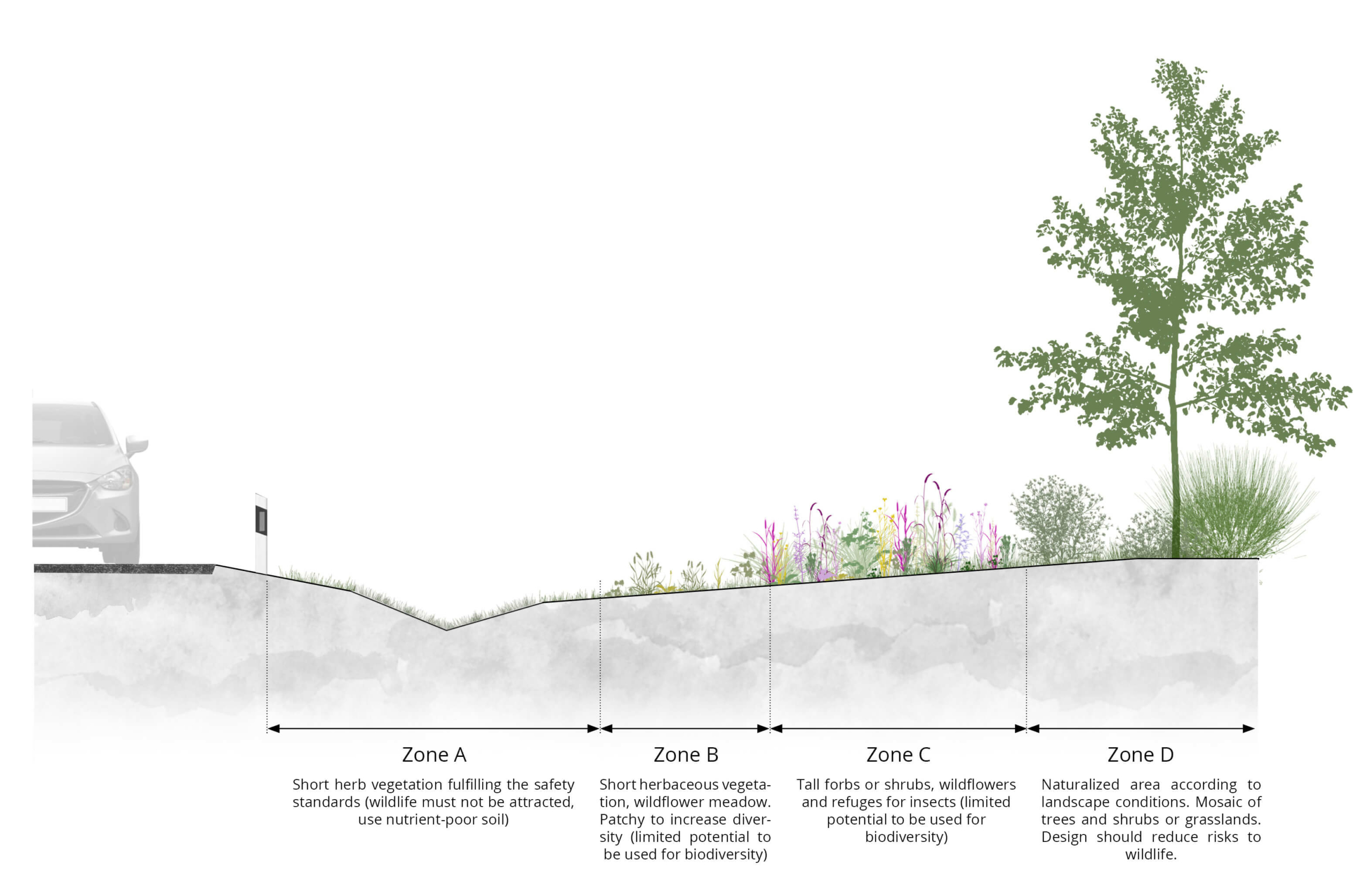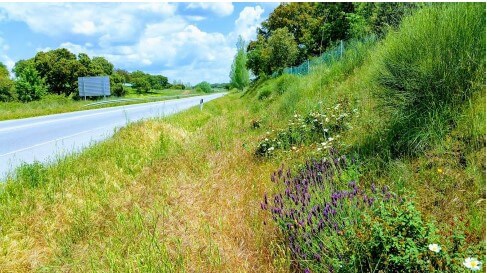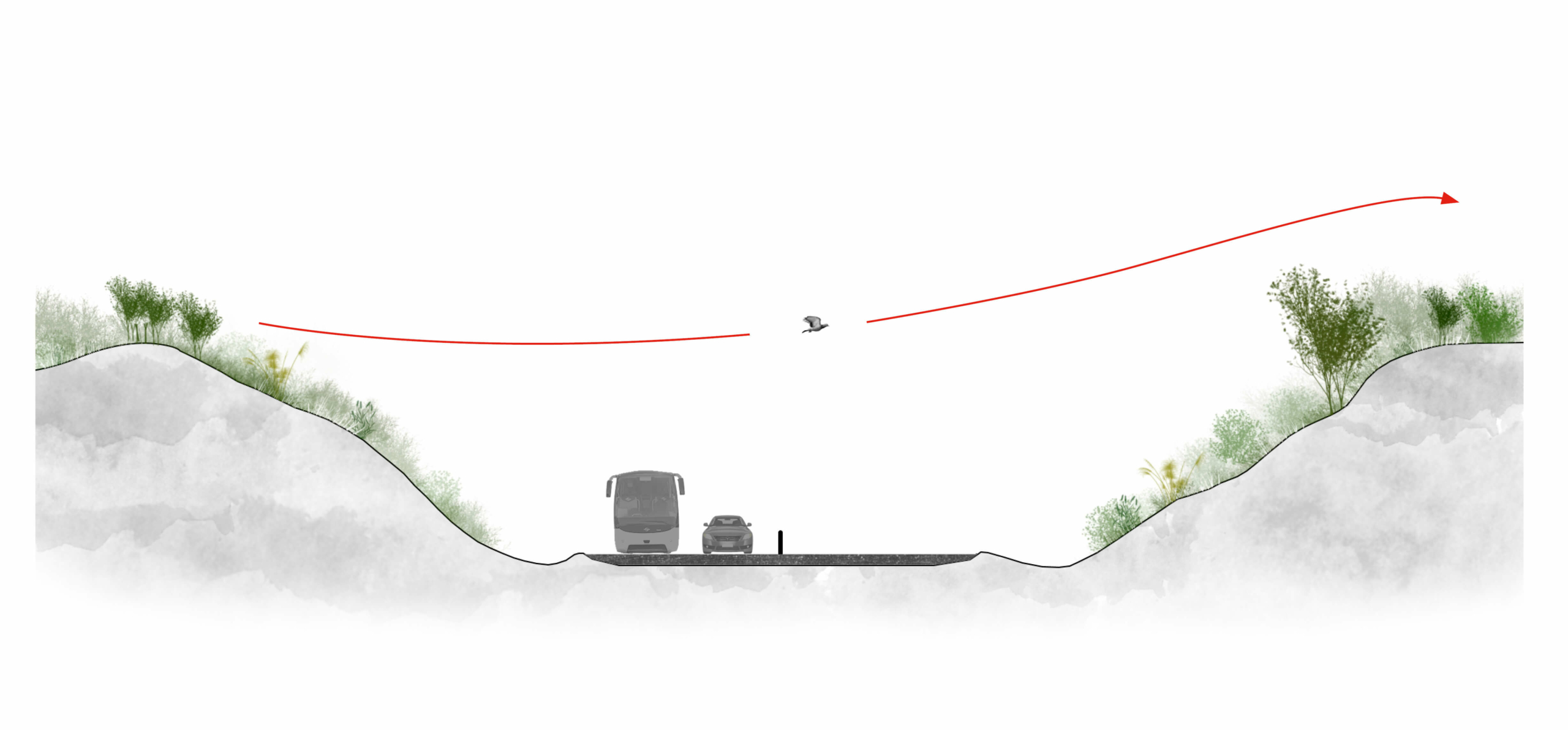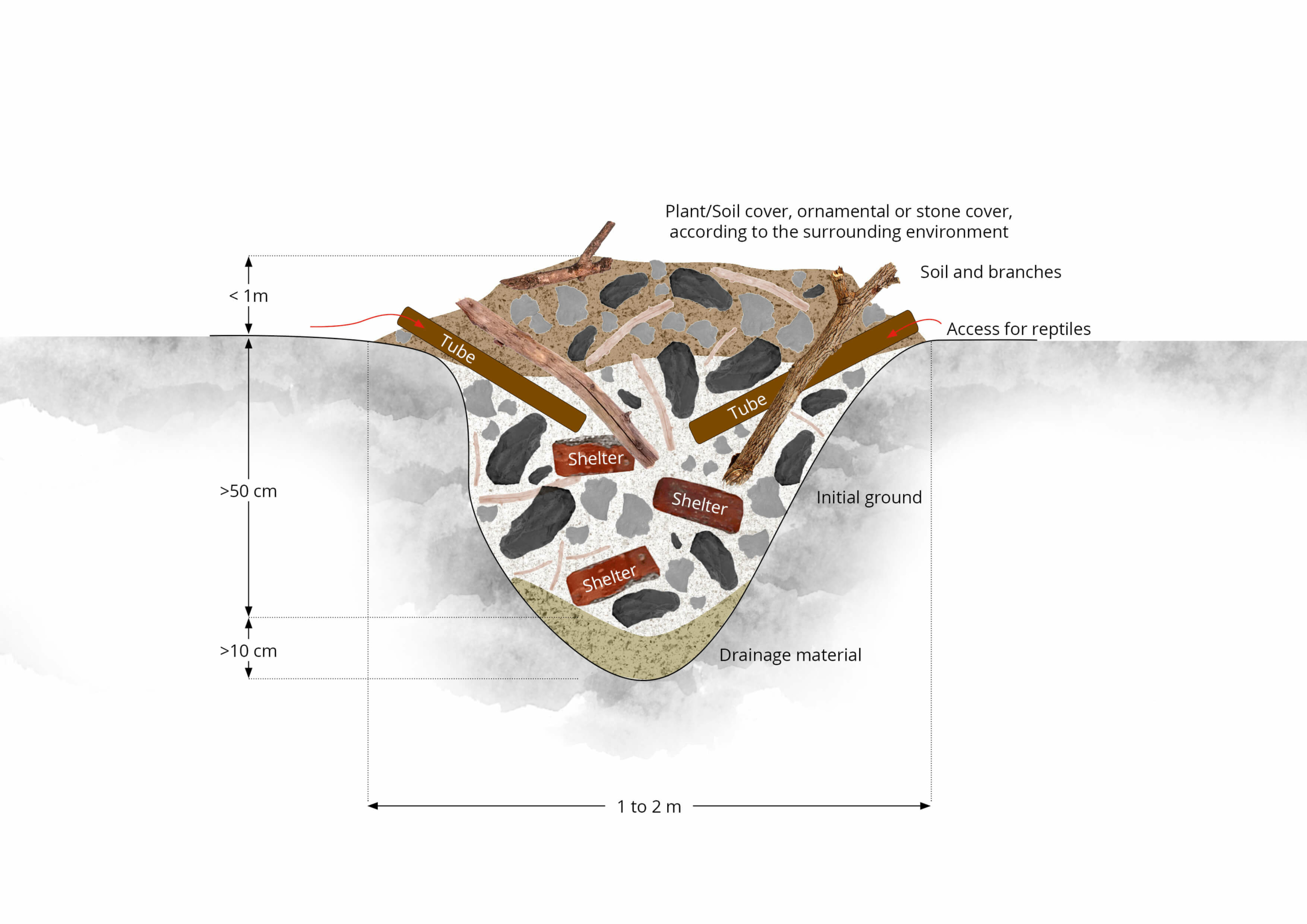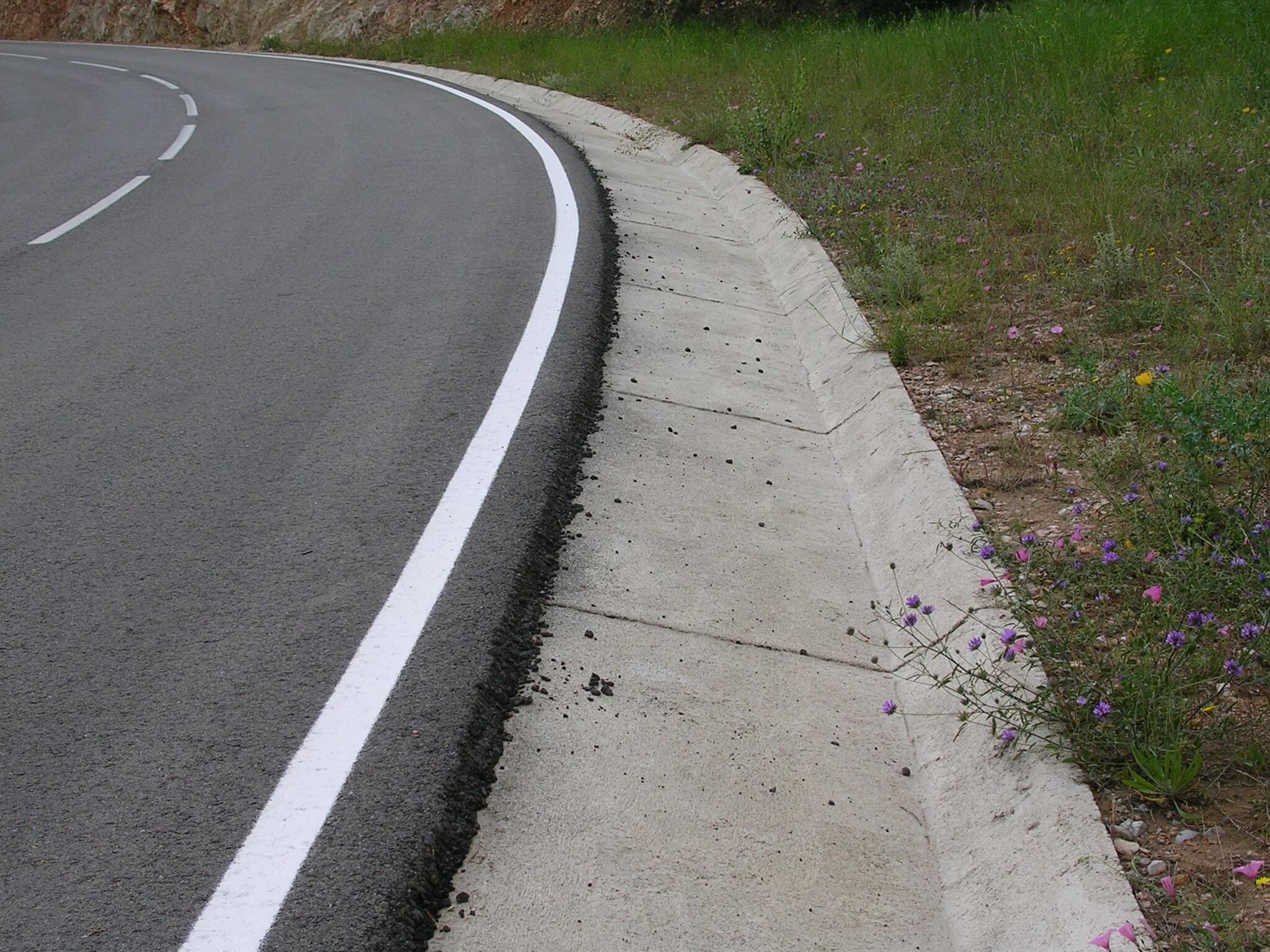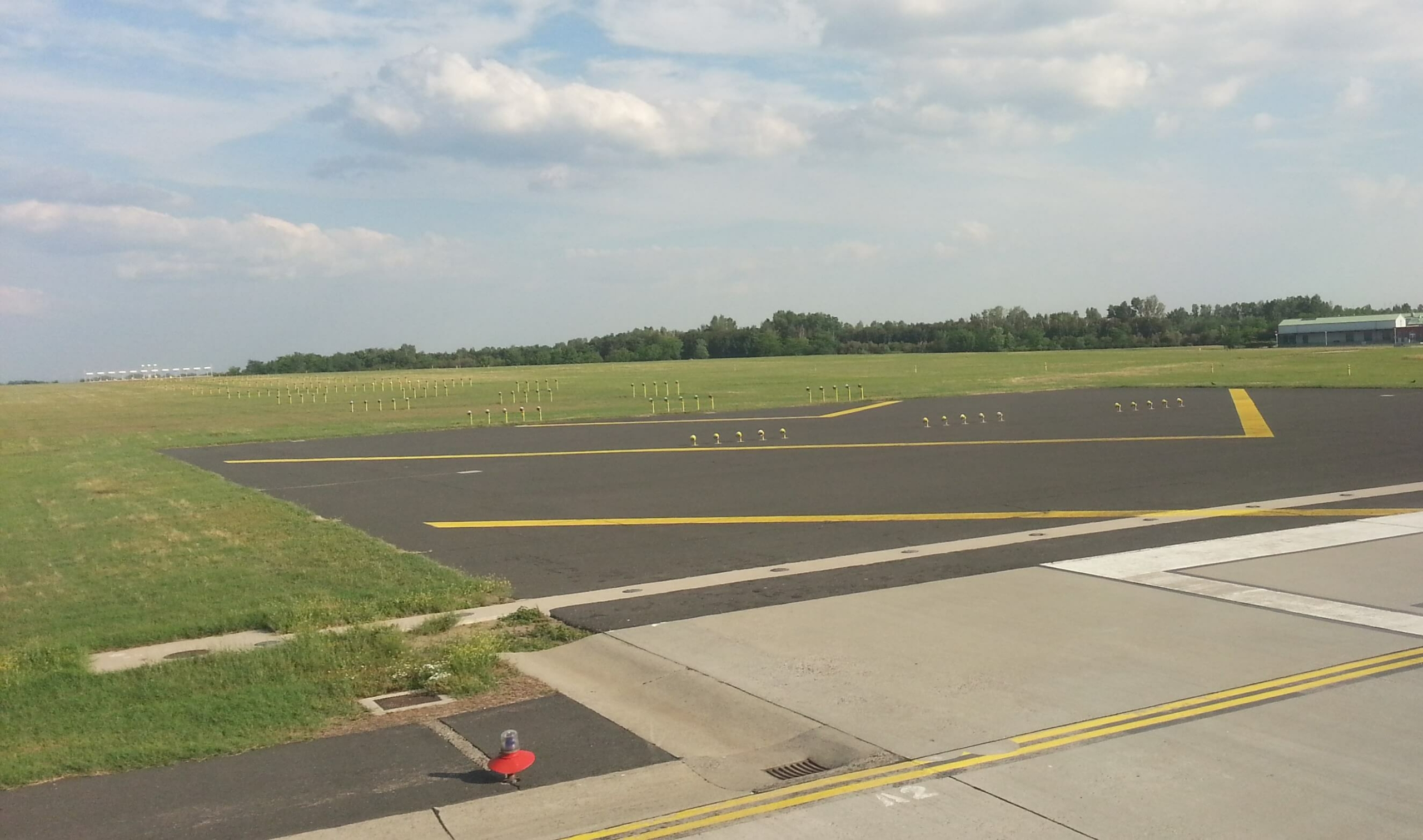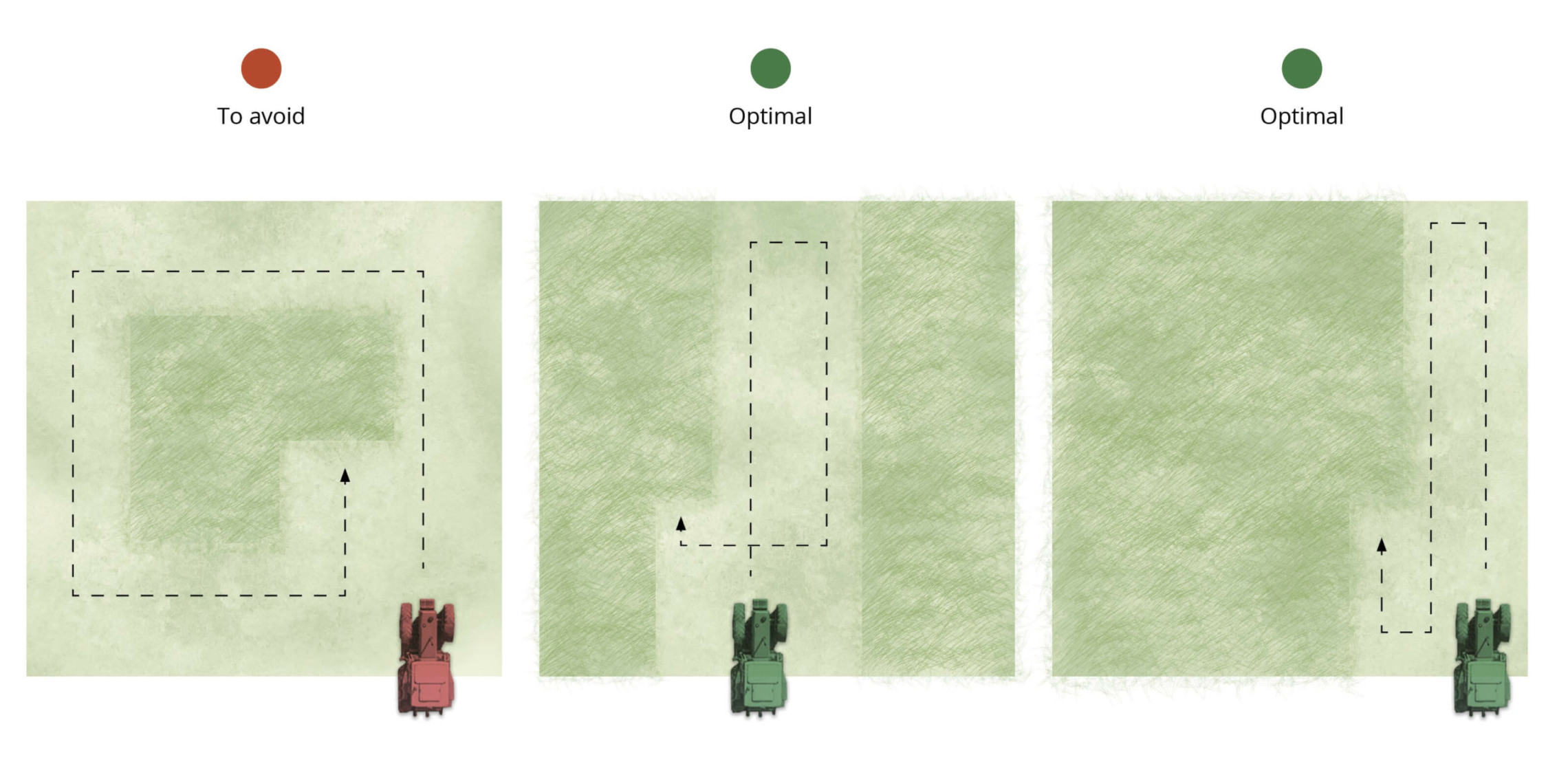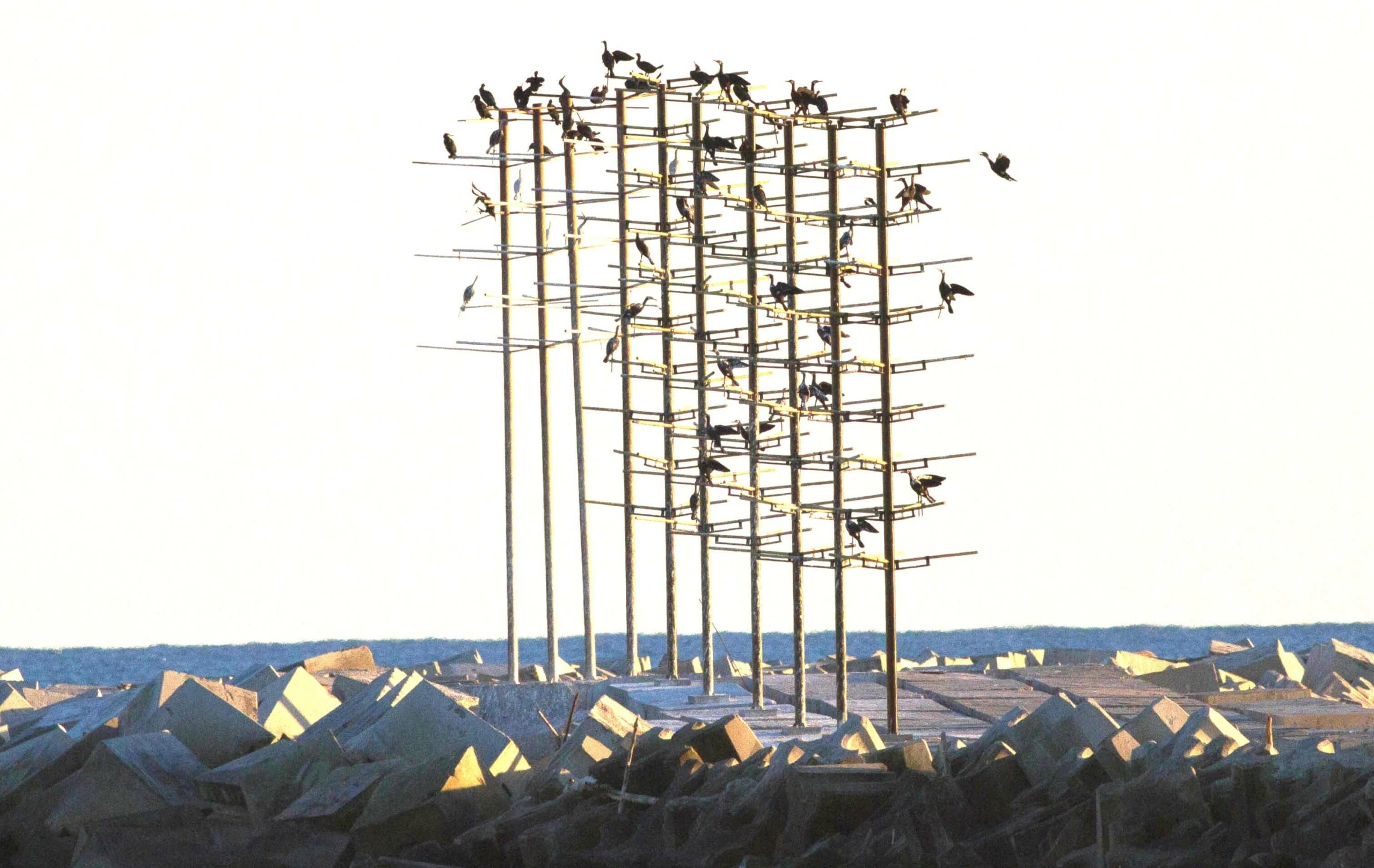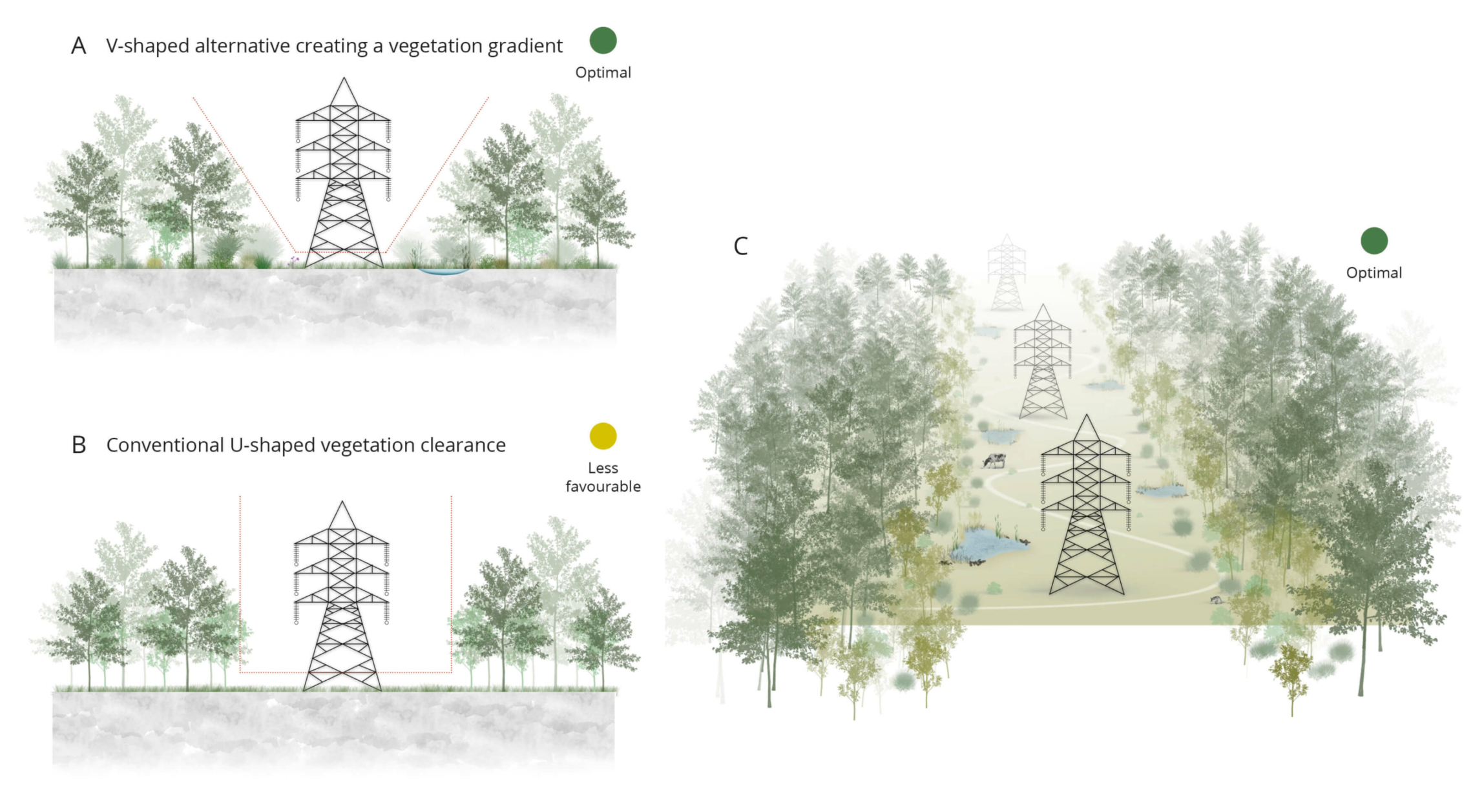Plans to analyse the whole system of green areas associated with an infrastructure and to define differentiated management to be applied at different sections should be undertaken by the operators. Identifying different zones and types of maintenance is a critical first step which will allow a better integration of these green areas into the surrounding landscape. Maintenance tasks will be different according to both standards for guaranteeing infrastructure safety and resilience as well as biodiversity preservation and restoration.
Features such as soil preparation or the choice of plant species to be used and the patterns of their distribution in green areas influence the potential benefits or impacts that HTI can deliver. Management of soils and vegetation are key to prevent IAS spread (see Section 5.8 – Invasive Alien Species (IAS)) and can be used to limit the effects of climate-related hazards (see Section 5.9 – Adaptation of infrastructure to climate change: risk and opportunities for biodiversity).
Recommendations for HTI maintenance practices require adaptation to local conditions (e.g., landscape features, weather, soil conditions). In this section general rather than detailed recommendations are provided due to variance across European regions. Complementary information is provided in Chapter 7 – Maintenance and particularly in sheets 7.4.12 – Management of vegetation; 7.4.13 – Management of habitats for pollinators and other small fauna and 7.4.15. Management of verges to reduce forest fire risk in sensitive areas.
Road and railways verge design and management
- Verges are the strip of land located in the ROW, adjacent to carriageways and railways tracks which have several functions related to traffic safety, landscaping, land stabilisation and other requirements, all of which must be balanced. They have diverse features depending on landscape context and topography, possibly being flat, embankment or cuttings areas with high variation in dimensions, isolation, soil and vegetation. Verge design and maintenance must be undertaken according to standards for infrastructure safety and avoiding the attraction of wildlife to areas with high risk of mortality. An appropriate maintenance plan also could help to reduce disturbance caused by traffic to surrounding lands and other negative effects such spread of forest fires and dispersal of IAS.
- Management of verges must be undertaken to achieve different conditions in strips according to their primary goals and providing increasing complexity as the distance from traffic increases. Short herbaceous vegetation must be provided in the section closest to the carriageway to fulfil safety standards (Figure 5.7.1. Zone A). Intermediate sections where the width will depend on the topography, should be revegetated with wildflowers and tall grasses; a mix of native flowering plants providing food and host plants for pollinators and their larvae could be included (Figure 5.7.1. Zones B and C). Species flowering in different seasons would maximise food resources for pollinators. The areas furthest from traffic could include a mosaic of trees, shrubs or grasslands similar to those found in the surrounding landscape (Figure 5.7.1. Zone D). Wildlife refuges for small animals could also be located in this zone – provided it has been established that these will not cause any negative impacts on populations. Zones C and D can be managed in a way that they provide a mosaic of different habitats. This could simply be achieved by applying a mowing strategy that creates patches of mowed areas with other areas of taller vegetation which provides more food and refuge to small fauna.
- Species adapted to local conditions must be selected for planting to reduce the cost of seeds/plants and the need for maintenance as well as regenerating local ecosystems and symbioses with local animal species.
- Mowing techniques are crucial to define green area conditions which meet requirements to benefit biodiversity:
- Cutting at an equal mowing height (recommended higher than 20 cm) rather than shredding and no use of conditioners can help to reduce the destruction of insects, amphibians, birds and small mammals.
- Timing mowing to allow the completion of the natural cycle, both for plant and invertebrate species. In general, mowing once in autumn or twice per year is recommended.
- Removing the residues after mowing also benefits biodiversity. Furthermore, this can be used for other purposes, such as composting or energy production (biofuel)
- Road verge management must be adapted to prevent forest fire risk particularly in Mediterranean areas where this is a serious concern. Here, vegetation design and maintenance should be adapted to provide areas close to the carriageway with short vegetation and plants which cannot initiate a fire in case of sparks or cigarette butts from vehicles and to avoid continuity of bushes and trees with adjacent natural areas in order to prevent the spread of wild fires (Figure 5.7.2). Recommendations ranked according to the risks in a given area are described in Section 5.9.1 – Implications for biodiversity of measures for climate change adaptation. Maintaining this verge design depends entirely on regular and frequent vegetation control. If shrubs and young trees are allowed to grow, they may quickly provide even better shelter and more attractive food resources than the original habitats in surrounding landscapes which could cause an increase in animal mortality risk.
- Vegetation maintenance procedures must include ‘Early awareness’ to detect and eradicate IAS in early stages of establishment. Providing continuous vegetation cover (overplanting) may help to limit the opportunities for IAS establishment. A wide number of techniques could be required to control IAS and are described in Section 5.8 – Invasive Alien Species (IAS).
- Verges could be managed to benefits pollinators, providing nesting and overwintering sites or facilitating dispersal across highly modified landscapes (such as extensive cropland, urban and peri-urban areas). Some pollinator species require bare soil for nesting, which is not recommended in areas with a high risk of IAS colonisation. In these sections, careful prioritization is needed. More information is provided in sheet 7.4.13 Management of habitats for pollinators and other small fauna.
- Endangered native plant species could be grown on verges which meet their requirements. In some countries there are examples of this use of verges which show the potential of HTI to contribute to the recovery of species which, due to changes in land use, have become rare in natural habitats surrounding infrastructure (Figure 5.7.3).
- Verges can be designed to prevent road mortality. Clearing bushes and trees from a 3-5 m strip alongside roads and railways may reduce refuges for large mammals such as ungulates, while improving the visibility of the animals to drivers (Figure 5.7.1) with a resulting reduction of accidents involving large animals. On the other hand, some verges with short vegetation often have high densities of small mammals such as rodents, which attract in birds of prey that can collide with vehicles as they swoop. In such conditions, maintaining tall grass reduces the risk of vehicle collision for these birds as they can’t see their prey. Regarding invertebrates, some studies show lower rates of pollinator mortality on roads where a high number and diversity of flora resources is provided on verges since this reduces the need to cross the roads in search of resources.
- Planting hedges along verges may help to lead animals towards fauna passages. Nevertheless when they are combined with wildlife fencing the design must be adapted to avoid any damage to wildlife (see Section 5.2.9 – Fencing. Other points of attention). Tall tree hedges are planted on some road sections to enhance driver attention in monotonous landscapes; these hedges also can act as corridors guiding wildlife movements. However such hedges can be attractive to birds because they provide food, perching and nest sites, with an increased risk of collision with traffic. Earthen mounds or screens to reduce noise or to guide flight may also have a role in reducing risk of collision with birds by forcing flight to rise above the traffic (see Section 5.6.2 – Noise and Section 5.2.10 – Fencing and screening for flying fauna). To the same end, tall trees and bushes which don’t provide edible fruit could be planted at the top of cuttings while low vegetation is maintained on verges in the areas close to roads or railway tracks (Figure 5.7.4).
Points for special attention
- Management of green HTI areas must avoid planting or facilitating the propagation of:
- species which may attract animals to the verges to forage, increasing the risk of collisions with vehicles (e.g., no bushes with attractive berries should be planted);IAS or problematic species (e.g., no species that can spread blight or other diseases should be planted);flammable species which can increase risks of forest fire ignition and spread to surrounding habitats;
- species which are not adapted to local conditions and require high maintenance.
- Green area maintenance must avoid (or severely restrict) the use of herbicides, pesticides and fertiliser especially when crossing natural areas to reduce the risk of polluting surrounding ecosystems. Biological methods to control pests must be prioritised (see Section 5.6.3 – Chemical pollution).
Providing shelter and wildlife refuges
- Wildlife shelter and refuges can be created for different species on verges and other green areas but must be carried out following careful planning as it may inadvertently increase animal mortality. The optimum areas for such refuges are in the surroundings of wildlife passage entrances, guiding animals towards the crossing structure and providing refuges along the passage. This type of refuge encourages invertebrates and small vertebrates into such structures and increases ecological connectivity for small organisms (see Section 5.5 – Wildlife passages).
- Refuges are usually made of rocks or logs (Figure 5.7.5). In cold weather they can serve as hibernation locations for small mammals, amphibians or reptiles (Figure 5.7.6). In areas of fire risk, allowing dead vegetation to accumulate is not recommended (see Section 5.9 – Adaptation of infrastructure to climate change: risk and opportunities for biodiversity) so rocks are a better option. Providing nesting sites for pollinators in poles drilled with holes or leaving bare soil is also a possibility, with design carefully adapted to the target species.
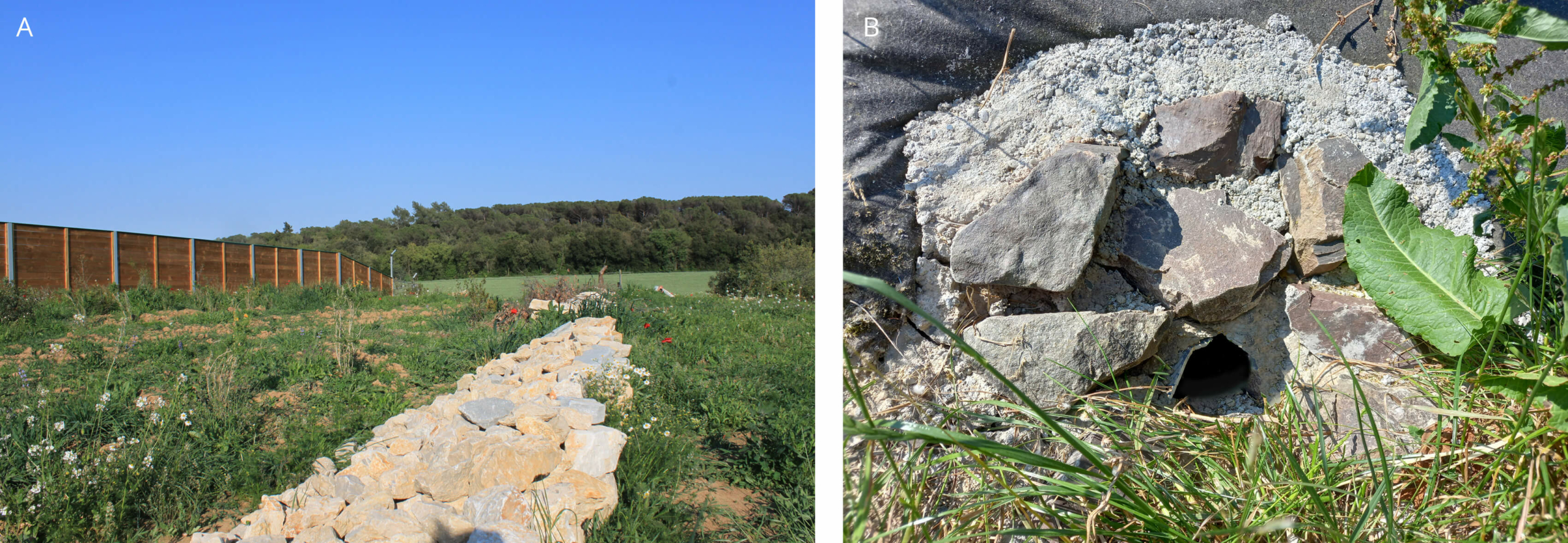
Adaptation of kerbstones
- Vertical kerbstones to provide perimeter drainage of runoff are often too high for small amphibians, reptiles, mammals or invertebrates. If these animals cannot exit the carriageway, they become trapped and usually die. Gently sloping kerbs that allow small animals to access the verges are a cheap alternative to vertical kerbstones (Figure 5.7.7). With a height above the road of a few millimetres at the bottom they are also suitable for visually impaired pedestrians using a guiding stick. A gap between vertical kerbstones can also provide the possibility of escape, especially if plants are allowed to grow between the kerbstones.
Airport green areas design and maintenance
- Airfield features are strictly regulated by the International Civil Aviation Organisation (ICAO) and national civil aviation authorities to provide air navigation safety. Attracting animals – particularly birds – to an airfield may well increase mortality risk due to strikes with aircraft and is a serious threat to air navigation safety. An appropriate management of the airfield habitats, in particular green and blue areas, can reduce such risks.
- Vegetation is a principal area of concern. As it offers key resources to wildlife -food and shelter- its management should be one of the priority measures to reduce wildlife presence and minimize aforementioned risks (Figure 5.7.8).
- Grassland management at airfields needs pre-existing, detailed wildlife studies, such as lists of target species, as it is site-specific according to the airport location, climate or surrounding landscape. Then, each airport or airports in a region must define the optimal condition of their grasslands to reduce the attraction of the most abundant or relevant species.
- The airfield’s grasslands should be maintained to be as homogeneous as possible, so the attraction is limited to a lower number of species. Some key issues to deal with:
- Height. Next to runways and taxiways the grass must be maintained at a very low height due to aeronautical restrictions. Beyond this area, taller grass is allowed and widely recommended. Nevertheless, no generalised recommendations are possible due to the different wildlife compositions between airports or regions.
- Density. In general, a high and dense vegetation cover is recommended, as it prevents birds to land (e.g., gulls) and from seeing invertebrate and small mammal prey (e.g., raptors) and so reduces the attraction of birds to hazardous areas.
- Composition. Grass species used at airfields should not provide grains or seeds suitable to feed birds. Increasing the homogeneity of grass species will reduce the diversity of wildlife attracted and will increase the useability of other wildlife management measures (see Section 5.10.3 – Measures to reduce impacts at airports). Species of grass with endophytes, not attractive to invertebrates, have been tested to reduce the attraction of insectivorous birds as an alternative to the use of chemical pesticides. Endophytic grasses have been also tested to reduce attractiveness for geese and other foraging birds. All the usual recommendations regarding the choice of species to be planted apply also to airports, including the need to avoid IAS spread.
- Mowing is especially important in airports where green areas are managed to ensure operational safety. Several areas of concern are:
- The mowing system can have important repercussions for biodiversity. For example, using a non-centripetal mowing pattern (Figure 5.7.9) allows wildlife to escape without being trapped in the centre of the mown area. Also, reducing the mowing speed to 5-10 km/h and setting up a ‘scare bar’ would increase the ability of wildlife to escape. Cutting at an equal mowing height rather than shredding and not using conditioners can help to reduce the mortality of insects, amphibians, birds and small mammals.
- Mowing high (above 20cm) can provide benefits for biodiversity by allowing ground breeding species to thrive, such as insects, amphibians, reptiles, small mammals and birds.
- A mowing regime should be planned according to the composition of the grassland and the climate conditions. Grass must be cut at least before the seeds production season. Measures should be taken to avoid the attraction of birds that feed on soil invertebrates during mowing (such as cattle egrets).
- Mowing residues should be removed during or just after mowing. The presence of rooting vegetation offers habitats for small animals, and they attract other flying fauna that feed on them and which can be struck by aircraft.
- Bushes, shrubs and trees located at an airfield can attract wildlife to eat, nest, perch or refuge. Their elimination is generally recommended, specially within the runway and taxiway strips. If they are retained, minimum attractiveness should be ensured, selecting the appropriate species, which do not produce attractive fruit, or undergo appropriate management (for example, removal of undergrowth). Crops must not be part of any airfield green areas, as these are highly attractive to a wide variety of animals seeking food opportunities and put them and air traffic at high risk of dangerous conflict.
- Whenever possible, habitat management should be extended to the surroundings of the airfield, as flying fauna can move between these areas by overflying runways and aircraft flight paths. ICAO defines a 13-km circle centred on the aerodrome reference point where land use should be assessed with regards to wildlife hazard management.
- In certain areas of airfields, far from flight paths and human disturbance, it may be possible to create refuge areas for wildlife, protecting flora and fauna without increasing any risk of mortality and without compromising safety. Some maintenance may be required in these areas to control the growth of woody plants and small shrubs (Figure 5.7.10).
Habitats management around powerlines
- Tree maintenance is frequently carried out close to powerlines, where tall vegetation is usually cleared out of the way of transmission cables to reduce the risk of power disruption, normally from branch contact or fallen trees.
- Areas below and around powerlines can be restored in several different ways according to their main use and the features of surrounding landscapes, to promote biodiversity:
- as meadows, maintained by grazing mammals (Figure 5.6.8), which can help the recovery of open habitat species, in decline in some European areas where forests are expanding;
- creating a gradient of vegetation height and complexity (similar to Figure 5.7.1 for verges) that maintains a low risk of power disruption but increases biodiversity benefits (Figure 5.7.11A);
- creating stepping-stones along powerlines. These stepping-stones can be created in different ways, such as planting native vegetation of interest to wildlife, building ponds or providing refuge shelter for small fauna (e.g., stone rows) (Figure 5.7.11C);
- in all cases avoidance of wildlife-transmission cable collision and electrocution risks must be a priority (see Section 5.10.2 – Measures to reduce risks caused by powerlines).
